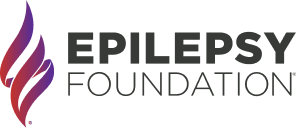Epilepsy of Infancy with Migrating Focal Seizures

What is the syndrome epilepsy of infancy with migrating focal seizures?
Epilepsy of infancy with migrating focal seizures is a very rare form of epilepsy.
- The typical age of onset is before 6 months with an average age of onset of 3 months of age.
- It equally affects boys and girls.
- The seizures in this syndrome are characterized by focal tonic seizures or focal clonic seizures. The focal clonic seizures involve the arms and eyelids, the head turns to either side, and some people may stop and stare before the clonic activity starts. Seizures may also be difficult to detect clinically, with subtle behavioral arrest.
- Also autonomic changes (stop breathing, turning blue, sweating, and hiccups) can frequently be seen during the seizures.
- Characteristically, seizures move from one lobe of the brain to another and from one brain hemisphere to another, although this spread may only be evident if an EEG is done during seizures.
- Though seizures may be infrequent at onset, they quickly evolve into frequent daily and prolonged seizures with status epilepticus. Status epilepticus is common in this type of epilepsy syndrome.
- Infants may be developmentally normal at onset of seizures, but regression and severe developmental disabilities are the norm.
What is the cause?
- The cause of this epilepsy syndrome is often unknown.
- The most common known cause is genetic, and several genetic mutations have been found in persons with epilepsy of infancy with migrating focal seizures, including: KCNT1, SCN1A, SCN2A, PLCB1, TBC1D24 and CHD2. These genetic changes usually occur de novo in the child – meaning the risk of recurrence is siblings is low.
- Family history of seizures or epilepsy is usually not present.
- Rarely, this syndrome has been associated with congenital disorders of glycosylation.
How is it diagnosed?
- The diagnosis is based on a characteristic history and electroencephalogram (EEG)
- The EEG in children with this epilepsy syndrome may be normal at the beginning. However, the EEG background becomes slow over time as well as multifocal spike wave. Recording of seizures on the EEG is helpful to show the characteristic migrating pattern.
- Genetic tests are usually ordered by your doctor.
- Magnetic resonance imaging (MRI) scans are usually normal at onset, but it is required to exclude a brain abnormality. MRI scans may show brain and cerebellar atrophy as condition progresses.
How is it treated?
Seizures in children with epilepsy of infancy with migrating focal seizures are frequent and occur multiple times a day. Seizures tend to be resistant to anti-seizure medication.
- Certain genetic etiologies may respond better to specific therapies. For example, some children with KCNT1 mutations respond favorably to quinidine, and others with SCN2A mutations respond well to high dose phenytoin.
- In cases without a clear etiology to direct treatment, many medications are tried, often in combination, but seizures typically remain pharmacoresistant. There are some reports of stiripentol and bromides helping some children. Other medications that have been used to treat this epilepsy syndrome include adrenocorticotrophic hormone and prednisone. Ketogenic diet and vagus nerve stimulation (VNS) may be treatment options.
- Resective brain surgery is not usually an option.
- Children with epilepsy of infancy with migrating focal seizures commonly have status epilepticus and prolonged seizures that may need emergency medical treatment or treatment with a rescue therapy, such as diazepam rectal gel (Diastat) or another form of benzodiazepine given into the nose (intranasally) or in the cheek cavity.
- Parents of children with epilepsy of infancy with migrating focal seizures should talk to the treating neurologist or health care provider to learn about seizure emergencies. They should all have a home rescue medication and a Seizure Response Plan, that outlines what to do in a seizure emergency.
What is the outlook for people with epilepsy of infancy with migrating focal seizures?
- Children may be developmentally normal at onset of seizures, but with frequent seizures, regression or lack of progression, with resultant severe developmental disability is the norm. A milder evolution has been reported in a minority of children.
- Patients can also be affected by gut dysmotility and movement disorders.
- Many children with this epilepsy syndrome die in childhood due to complications of the disorder, including repeated infections. Those who do survive are severely disabled and will continue to have seizures despite treatment.
Resources
Epilepsy Centers
Epilepsy centers provide you with a team of specialists to help you diagnose your epilepsy and explore treatment options.
Epilepsy Medication
Find in-depth information on anti-seizure medications so you know what to ask your doctor.
Epilepsy and Seizures 24/7 Helpline
Call our Epilepsy and Seizures 24/7 Helpline and talk with an epilepsy information specialist or submit a question online.
Tools & Resources
Get information, tips, and more to help you manage your epilepsy.


